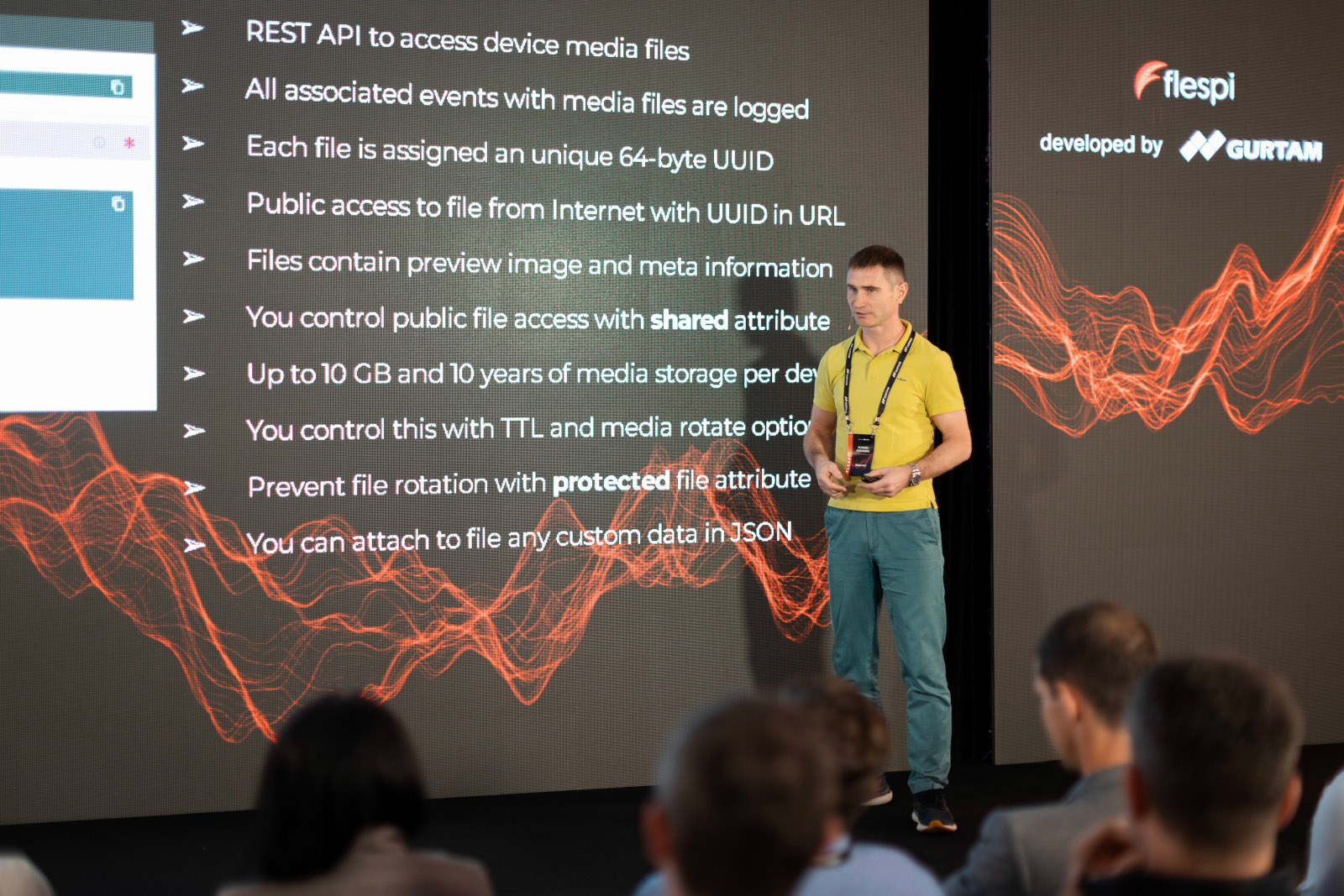It's the middle of autumn in the Northern Hemisphere, and in my humble opinion, it’s the most beautiful yet pessimistic season. Each day grows darker, wetter, and colder, with summer left somewhere behind and winter freezing the horizon.
As for the flespi team, after our September conference, finally, all our members have recharged their energy and are fully dedicated to the ongoing projects we planned for this year.
The most significant and noticeable among these projects is video telematics. If you own a modern MDVR device from Howen, Streamax, or a 4G Teltonika device with DualCam attached, consider yourself fortunate; you can already test it. Just enable experimental features in the flespi.io appearance configuration, or wait just one more month until we officially announce it and make video telematics controls available to everyone.
We've successfully implemented bulletproof remote photo/video download commands and are currently testing live video streaming from MDVRs and dashcams. The next step is a UI component that you can integrate into your application, allowing easy and seamless access to video clips/streams. Following this, a few more months of stabilizing and fine-tuning the video telematics features based on real user feedback. Modern $100-200 AI-powered dash cams integration of video telematics into your applications via flespi will be easier and more affordable than ever before.
At our conference, I highlighted our uptime history tracking since July 2017 — six years and counting. For each month, you can click and read a detailed description of what was happening at that time and the issues we solved. Writing monthly changelogs, I never realized the history we were creating with each uptime mark and changelog post. Now, reading through my articles from the craziest months, I can recall all the obstacles we overcame. So, if you want to explore flespi origins, scroll our uptime bars back to July 2017 and click on each one to experience flespi R&D spirit at that time. We've become older, we’ve matured, but our spirit is still ON, and we continue to deliver new and essential functionality every month, even though supporting thousands of users and their ongoing projects now demands much more time than 3-6 years ago.
In October 2023, our uptime was 99.9895%, with a single 281-second network unavailability issue. This problem arose unexpectedly during regular equipment maintenance by the uplink provider due to a failure in our VxLAN hardware, which provided redundant uplinks between 2 data centers. We've switched the hardware to manual control to prevent similar issues until fully resolved. The problem has been escalated to the equipment vendor, and resolution is underway.
For those unable to attend our conference, we've released 3 very handy flespi training videos. Starting from covering basic entities, we touched integration aspects and explored built-in reports and notifications capabilities. And a few more training videos are in the pipeline.
We've tested AWS EC2 computing nodes for maximum telematics data reception throughput, you can check out our results in the article. Being a technical one, it’s about the money and cost-saving capabilities for those relying on cloud infrastructure for telematics messages’ delivery into their platforms.
If you're a regular flespi.io user, I’m sure you've already noticed the refreshed telemetry tab, now featuring new icons, including a rotating vehicle icon with status indicators. We're experimenting with better visualization of CAN bus data.
We've added 2 new reverse geocoding plugins: locationiq and gisgraphy. Now we support 6 reverse geocoding systems that can inject the address related to the location out of the device into a message.
Additionally, we've integrated 2 new hardware manufacturers into flespi: iTER IoT Solutions and fifotrack.
In analytics, a set of new features has been introduced, enhancing the application for counter type calc and defining a new state providing a counter of type variable. I'll be covering these enhancements, along with September's analytics updates, in a separate article soon.
Lastly, for the hardcore enthusiasts, we've enabled the usage of our expressions directly in REST API selectors. Now it’s possible to perform rather complex server-side selections of flespi entities (e.g., devices) for the necessary REST operations.
Looking ahead to November, as mentioned earlier, we will focus on finalizing the initial implementation of video telematics into flespi. While the official announcement will likely take place in December, most of the functionality should be available by the end of this month. Additionally, our access control systems, such as realms and grants, offering user management and corporate SSO authorization features, are nearing the end of their experimental state. Stay connected!
